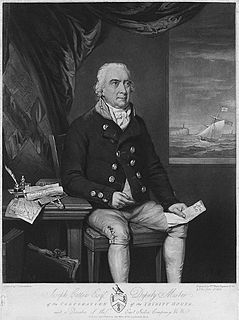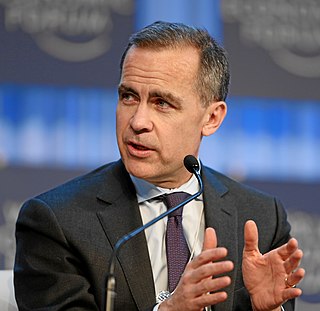
Mervyn Allister King, Baron King of Lothbury, is a British economist and public servant who served as the Governor of the Bank of England from 2003 to 2013.

Arthur Fenner was an American politician who served as the fourth Governor of Rhode Island from 1790 until his death in 1805. He has the seventh longest gubernatorial tenure in post-Constitutional U.S. history at 5,641 days. Fenner was a prominent Country Party (Anti-federalist) leader. Around 1764, Fenner joined several others as a petitioner for the chartering of the College in the English Colony of Rhode Island and Providence Plantations.
Henry Riversdale Grenfell was a British banker and Liberal Party politician.
Samuel Thornton was one of the sons of John Thornton, a leading merchant in the Russian and Baltic trade, and was a director of the Bank of England for 53 years and Governor (1799–1801). He had earlier served as its Deputy Governor. He was Member of Parliament (MP) for Kingston upon Hull from 1784 to 1806 and for Surrey from 1807 to 1812. He and was a member of the Committee for the repeal of the Test and Corporation Acts.

Mark Joseph Carney is an economist and banker. He holds Canadian, British and Irish citizenship and has been Governor of the Bank of England since 2013 and was Chairman of the Financial Stability Board from 2011 to 2018.

Beeston Long, of Combe House, Surrey, was an English businessman.

Joseph Cotton FRS, was an English mariner and merchant, a director of the East India Company and deputy-master of Trinity House.
Sir Peter Delmé was a notable British figure in commerce and banking in the early 18th century.
Thomas Cooke was an English merchant and banker. He was Governor of the Bank of England from 1737 to 1740. He had been Deputy Governor from 1735 to 1737. He replaced Bryan Benson as Governor and was succeeded by Delillers Carbonnel.
Delillers Carbonnel was a British banker who was Governor of the Bank of England from 1740 to 1741.
Benjamin Longuet was an English banker who served as Governor of the Bank of England from 1747–49, and who was a director of the bank from 1734 until his death. He had been Deputy Governor from 1745 to 1747. He replaced Charles Savage as Governor and was succeeded by William Hunt.
William Hunt was Governor of the Bank of England from 1749 to 1752. He had been Deputy Governor from 1747 to 1749. He replaced Benjamin Longuet as Governor and was succeeded by Alexander Sheafe.
Alexander Sheafe was Governor of the Bank of England from 1752 to 1754. He had been Deputy Governor from 1750 to 1752. He replaced William Hunt as Governor and was succeeded by Charles Palmer.
Charles Palmer was Governor of the Bank of England from 1754 to 1756. He had been Deputy Governor from 1752 to 1754. He replaced Alexander Sheafe as Governor and was succeeded by Matthews Beachcroft.
Matthews Beachcroft was Governor of the Bank of England from 1756 to 1758. He had been Deputy Governor from 1754 to 1756. He replaced Charles Palmer as Governor and was succeeded by Merrick Burrell.
Bartholomew Burton was a British financier, banker and politician who sat in the House of Commons from 1759 to 1768. He was Governor of the Bank of England from 1760 to 1762.
Robert Marsh was Governor of the Bank of England from 1762 to 1764. He had been Deputy Governor from 1760 to 1762. He replaced Bartholomew Burton as Governor and was succeeded by John Weyland.
William Cooper was Governor of the Bank of England from 1769 to 1771. He had been Deputy Governor from 1768 to 1769. He replaced Matthew Clarmont as Governor and was succeeded by Edward Payne.
Bonamy Dobrée was Governor of the Bank of England from 1859 to 1861. He had been Deputy Governor from 1857 to 1859. He replaced Sheffield Neave as Governor and was succeeded by Alfred Latham.





